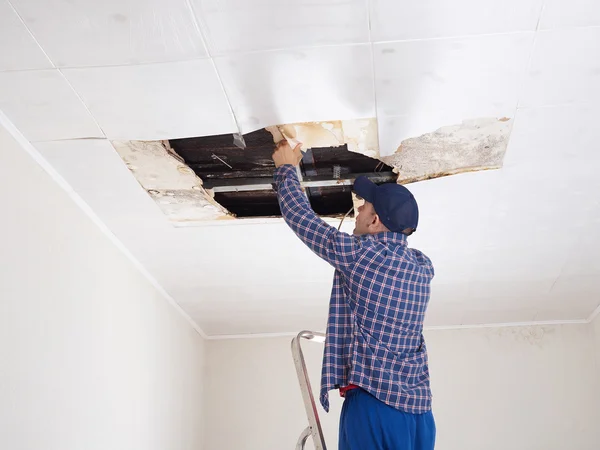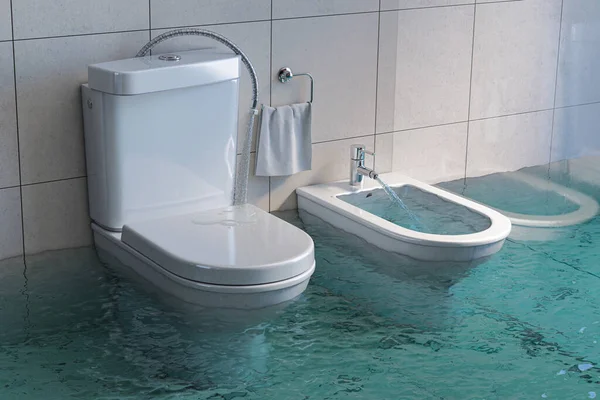Are you trying to find information concerning How to Repair and Prevent Bathroom Water Damage??

Water damage frequently occurs in the shower room as a result of the water used daily. In some cases, the damages could be a little mold and mildew from the shower. Various other times, it's massive damage on your floor. Whatever it is, it is always great to understand the reason and also stop it before it happens.
This guide will undergo a few of the typical root causes of water damage in the washroom. We will certainly additionally analyze what you can do to stop these reasons from damaging your bathroom. Let's dive in.
These are the common reasons you would have water damage in your bathrooms and how you can spot them:
Excess Moisture
It's awesome to have that long shower and splash water while you dance around and act like you're performing, but sometimes these acts can create water damage to your washroom.
Spraying water around can create water to head to edges as well as develop mold and mildews. See just how you spread out excess dampness around, and also when you do it, clean it up to stop damages.
Splits in your wall surface floor tiles
Shower room wall surface ceramic tiles have actually been specifically developed for that function. They safeguard the wall from moisture from people taking showers. Nonetheless, they are not undestroyable.
Occasionally, your washroom wall surface ceramic tiles fracture as well as allow some moisture to permeate right into the wall surface. This might potentially destroy the wall surface if you do not take any type of action. If you discover a crack on your wall surface floor tiles, repair it right away. Don't wait until it damages your wall surface.
Overflowing toilets and also sinks
As human beings, often we make errors that could create some water damage in the shower room. For instance, leaving your sink tap on can create overflowing and damages to various other parts of the restroom with moisture.
Additionally, a malfunctioning commode might cause overruning. For instance, a busted bathroom handle or various other parts of the cistern. When this takes place, it might damage the flooring.
As soon as you observe an overflowing sink or commode, call a plumbing technician to help take care of it instantly.
Ruptured or Leaking Pipes
There are many pipelines carrying water to various parts of your bathroom. Some pipelines take water to the toilet, the sink, the faucets, the shower, and lots of other locations. They crisscross the small location of the bathroom.
Every now and then, these pipes might obtain rusty as well as burst. Various other times, human action might create them to leak. When this takes place, you'll find water in the edges of your bathroom or on the wall.
To detect this, look out for gurgling wall surfaces, molds, or mold. Call a professional emergency plumbing professional to fix this when it takes place.
Roof Leaks
Often, the problem of water damage to the restroom could not come from the washroom. For example, a roof covering leak might create damage to the shower room ceiling. You can detect the damage done by checking out the water discolorations on the ceiling.
If you find water spots on your ceiling, examine the roofing system to see if it's damaged. After that, call a professional to assist address the issue.
Final thought
Water damage to your shower room can be annoying. However, you can manage it if you protect against some of the causes pointed out in this overview. Call a professional emergency plumbing technician if you see any serious damages.
How to Repair a Water-Damaged Wall in the Bathroom
All you need to know to repair bathroom wall water damage – from identifying the water source to finishing the repair professionally. If you don’t act quickly to resolve a water damage problem, you could find that it develops into a mold issue and/or cause structural damage to your home. Follow this guide to repair your bathroom before it's too late.
All you need to know to repair bathroom wall water damage
Water damage is a common household problem, and one that, if left unrepaired, can quickly lead to structural problems and health issues. The two most likely rooms where water damage may occur is the bathroom and the kitchen – where water is used often and there is high humidity.
What is water damage?
It is easy to think of water damage as caused by a flood or leaking tap or burst water pipe. However, when water damage is assessed, there are three main categories into which water falls (as classified by the American National Standards Institute). These categories are defined as:
Category 1 Water – ‘Clear Water’
This is sanitary water. There is usually no major threat to health by washing with this water, drinking it, or inhaling if it is streaming. Most water that enters your home will be category 1 water, while most water leaving your home will be either category 2 or 3 water. It may also come from melting snow, rainwater and water tanks.
Damage caused by this type of water can usually be repaired or restored, though this doesn’t mean that there are no potential health issues.
Category 2 Water – ‘Grey Water’
This is contaminated water – sometimes considerably so – and will cause illness if consumed or if it comes into contact with your skin. Water damage in this category is often caused by overflows from toilet bowls, and damage to washing machines and dishwashers. While damaged items might still be repaired or restored after damage by grey water, it is more difficult and more expensive to do so.
If the water damage in your home has been caused by grey water, it is advisable to have repairs made by professionals.
Over time, grey water will deteriorate and become black water.
Category 3 Water – ‘Black Water’
Category 3 water, also known as black water, is highly contaminated and a great risk to health. This may contain raw sewage, heavy metals, and other toxic substances. It will smell terrible.
If this is the water that has caused damage in your bathroom, do not touch it. Stop the water flowing if possible, seal the room and call the experts: it really isn’t worth the risk of ill health and disease that could be fatal. It is very unlikely that items can be repaired or restored if they have been damaged by black water.
https://www.porterscleaning.com/blog/how-to-repair-a-water-damaged-wall-in-the-bathroom/

Hopefully you liked our article on How to Repair and Prevent Bathroom Water Damage?. Thanks for finding the time to browse our article post. Sharing is nice. Who knows, you may be helping someone out. Thanks for taking the time to read it.
Contact Us Today